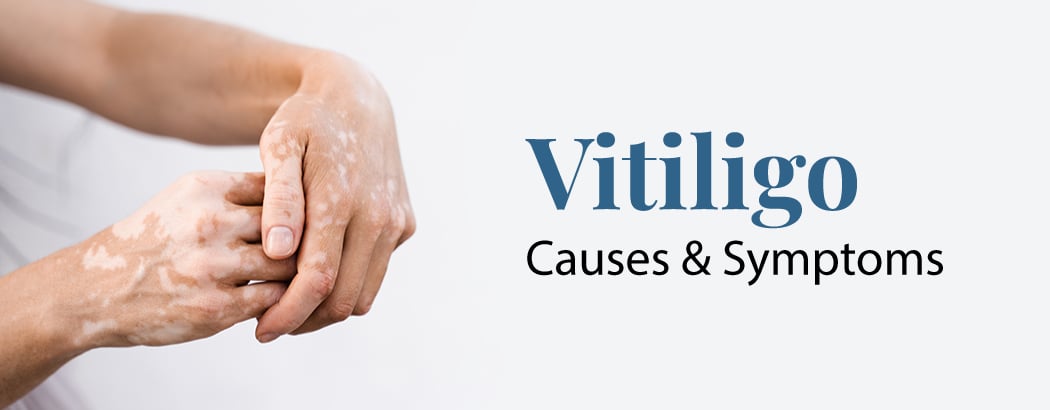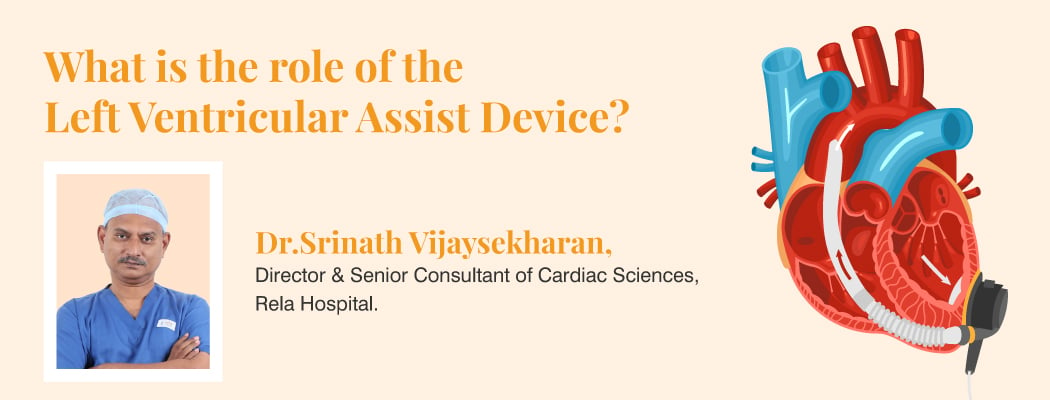Vitiligo: Causes and Symptoms
May 24, 2024

Overview
The condition is known as vitiligo and results in areas where the skin has lost its colour. Usually, the discolored spots enlarge with time. The skin on any region of the body may be affected by the disorder along with the interior of the lips and hair.
Melanin often determines the color of skin and hair. When melanin-producing cells are killed off or cease to function, vitiligo results. All skin types are affected by vitiligo, however those with dark or black skin may detect it more readily. Vitiligo is not communicable or life-threatening. However, it might cause the patient to feel anxious or self-conscious. We shall define vitiligo and gain a thorough understanding of its origins and symptoms in this article.
Contents
What is Vitiligo?
Vitiligo is a condition when the skin lacks melanin, a pigment. Melanocytes, the cells that give skin its color, are disappearing, which is why these patches show up. Areas that are more vulnerable to sun exposure or recurrent damage may be the source of vitiligo.
It might appear as several patches on the body or as a little piece of skin. It is challenging to forecast a person’s exact vitiligo symptoms. Though it often starts before a person turns twenty, the illness can affect people of all ages and genders. The illness presently has no known treatment, but some individuals may experience relief during which their skin regains pigmentation. But, in the future, they might potentially create fresh patches.
Types of Vitiligo
There are multiple types of vitiligo depending on the appearance of the patches, how much of the body they cover, and how they spread. These types can include:
- Localized: If a tiny region is covered in only a few patches, a doctor may diagnose localized vitiligo.
- Generalized: The most prevalent kind is generalized. The body starts to become discolored in certain areas at this point.
- Segmental: When your vitiligo is limited to a single body part, such as hands or face, it is referred to as segmental.
- Non-segmental: A type of vitiligo where patches appearing on both sides of the body are indicative of non-segmental vitiligo. This type takes longer to develop than the patches which are limited to one side of the body.
- Focal: When a discoloration remains in one area and doesn’t spread, it is termed as focal.
- Trichrome: A region of intense discoloration is called trichrome, and it is followed by a lesser discolored area followed by a normal colour skin.
- Universal: This type is extremely rare. Universal-type vitiligo causes at least 80% of the skin to be darkened.
- Mucosal: Mucosal vitiligo affects the genital and/or oral mucous membranes.
Causes of Vitiligo
Milky-white skin patches are a symptom of the acquired skin pigmentation condition known as vitiligo. According to research, this condition may originate from:
- An autoimmune disease: When healthy cells, called melanocytes, are mistaken for foreign invaders like germs that might damage the body, the body’s immune system gets activated. Hence the immune system overreacts, producing antibodies that kill the melanocytes.
- Stress: Regular mental or physical stress, particularly following an accident, can alter the quantity of pigment, a body’s melanocyte cells generate.
- Genetic alterations: The function of the melanocytes may be impacted by a genetic mutation or alteration to the body’s DNA. The chances of having vitiligo might be influenced by more than 30 genes.
- Environmental triggers: The function of the body’s melanocyte cells can be impacted by environmental triggers, such as exposure to harmful chemicals and UV radiation.
Symptoms of Vitiligo
In the early stages of vitiligo, an area of the skin goes from light to entirely white. A patch that might have a white center and lighter skin surrounding it can also look somewhat pink if there are blood vessels beneath the skin. The patch’s margins could be uneven or smooth. Sometimes they have brownish discoloration (hyperpigmentation) or are red and swollen.
Additionally, it might occasionally appear on the scalp or other areas with hair roots. The afflicted area’s hair may become white or gray due to a deficiency of melanin in the skin.
The most commonly affected areas of the body that will first exhibit the symptoms of vitiligo are:
- Genitals
- Groin
- Underarm area
- Wrists, hands, and fingers
- Mucous membranes, such as the insides of the mouth or nose
People with vitiligo might also develop:
- An ear inflammation
- Swelling or inflammation of the eyes called Uveitis
Every individual has a different condition. Certain individuals have a limited number of isolated white spots, while others have larger white patches that cover substantial sections of their skin. Though the patches may occasionally be itchy, vitiligo does not cause skin discomfort, such as drying.
It is impossible to forecast the extent of skin damage. Usually, the white spots don’t subside.
Complications of Vitiligo
The vitiligo problem does not progress to become another illness. But those who have vitiligo also have a slightly higher likelihood of other immune system-related illnesses or autoimmune disorders. These illnesses include:
- Issues with the thyroid
- Pernicious anaemia
- Diabetes
- Depression
- Low self-esteem
- Vitiligo is linked to an overactive thyroid gland problem.
The majority of vitiligo sufferers do not have them, however, to rule them out, a doctor could advise a blood test.
Conclusion
The disease vitiligo results in skin alterations that are purely cosmetic. It is not harmful, thus treatment is not necessary. However, people frequently experience low self-esteem, uneasiness, or discomfort due to skin changes caused by vitiligo. A vitiligo-affected person should be able to discuss in detail with his/her healthcare professional how appearance will impact their mental health. Although there is no known therapy for vitiligo, there are ways to improve your comfort level.
Frequently Asked Questions
1. Does vitiligo resolve on its own?
While vitiligo usually does not go away on its own, some individuals may go through periods of recurrence or dormancy. People generally opt for therapy to help control their symptoms.
2. When should I seek medical advice?
See your doctor right once if you detect a rapid loss of color or pigmentation in your skin, or if the discoloration covers a large area of your body.
3. Does vitiligo pose a significant risk?
Although vitiligo is not fatal, it can have an impact on a person’s quality of life and self-perception. Although there is a chance of lasting symptom reversal, treatment is not always guaranteed. For some people, managing an illness may include psychological therapy.
4. Is vitiligo common?
Vitiligo is not so prevalent. Over 1 percent of people worldwide suffer from vitiligo.







